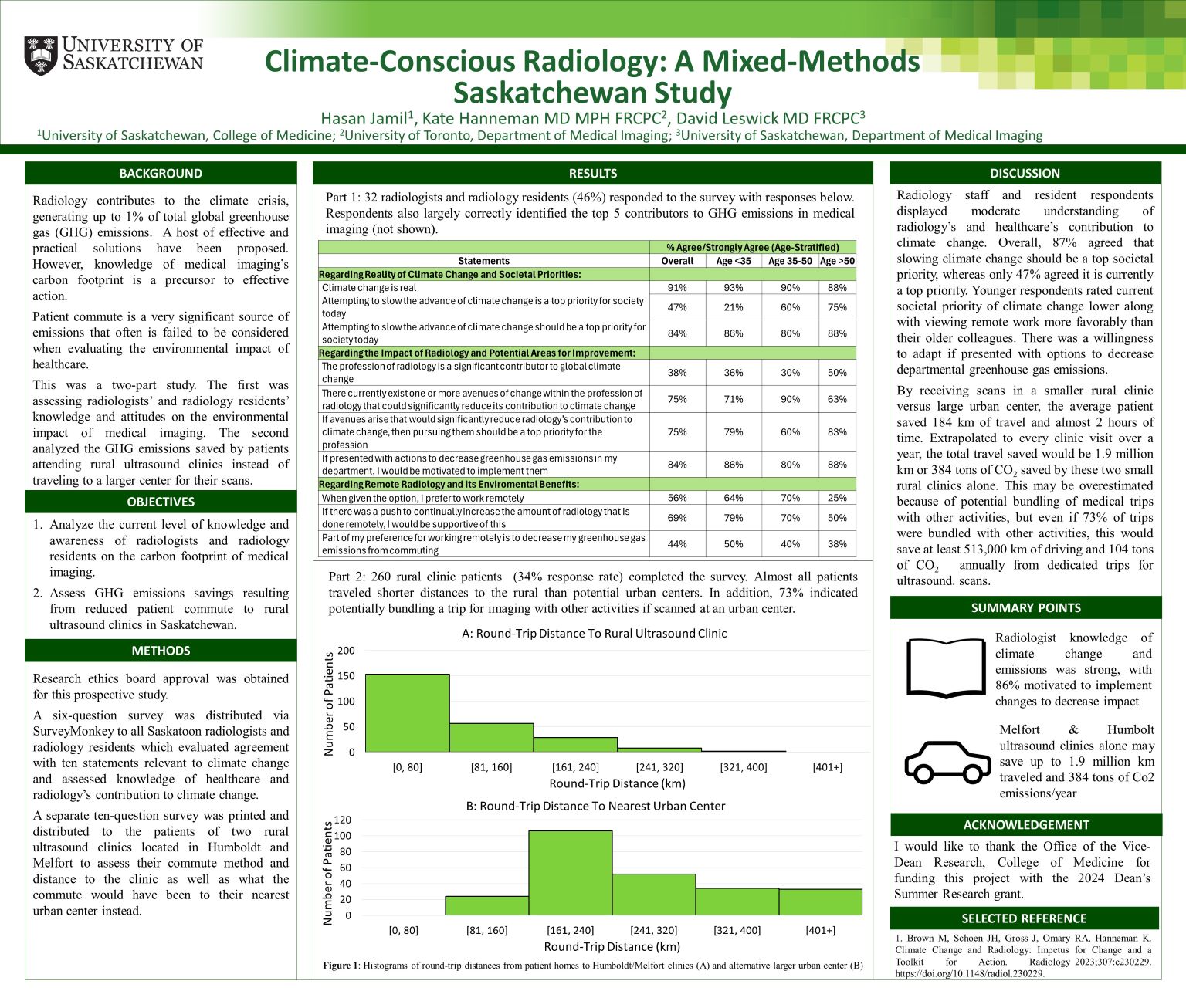
Climate-Conscious Radiology: A Mixed-Methods Saskatchewan Study
Hasan Jamil
Radiology contributes to the climate crisis, generating up to 1% of global greenhouse gas (GHG) emissions. Knowledge of medical imaging’s carbon footprint is a precursor to effective action. Patient commute is often overlooked yet is a significant source of emissions. This was a two-part study. The first was assessing radiologists’ and radiology residents’ knowledge and attitudes on radiology’s environmental impact. The second analyzed GHG emissions saved by patients attending rural ultrasound clinics. A survey was distributed via SurveyMonkey to all Saskatoon radiologists and radiology residents which evaluated knowledge and attitudes regarding climate change. A separate survey was distributed to the patients of two rural Saskatchewan ultrasound clinics to assess commute. Radiology staff and residents displayed moderate understanding of radiology’s and healthcare’s contribution to climate change. 87% agreed slowing climate change should be a top priority, whereas only 47% agreed it is currently a top priority for society. Younger respondents rated current societal priority of climate change lower than their older colleagues. Through rural ultrasound clinics, the average traveler saved 184 km and almost 2 hours of time. Extrapolated to every clinic visit over a year, the total travel saved would be 1.9 million km or 384 tons of CO2.
